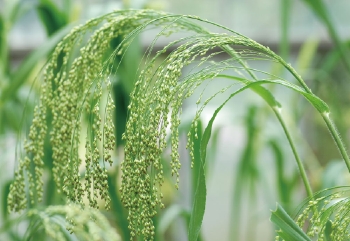 We have practiced a project “Plants and People Museum” at the Ecomuseum Japan Village for learning conservation of biocultural diversity, in Kosuge-mura, Yamanashi prefecture, where is located very important forests for the drinking water reservation of Tokyo Metropolis. This project may propose a model for rural development with the conservation of biocultural diversity. We promote the conservation and revival of indigenous varieties of millet and vegetables with villagers. This concept is supported theoretically by our research on the traditional knowledge system of distinguished farmers in Japan and Eurasia. They have vividly told us their excellent experiences and indigenous knowledge.
We have practiced a project “Plants and People Museum” at the Ecomuseum Japan Village for learning conservation of biocultural diversity, in Kosuge-mura, Yamanashi prefecture, where is located very important forests for the drinking water reservation of Tokyo Metropolis. This project may propose a model for rural development with the conservation of biocultural diversity. We promote the conservation and revival of indigenous varieties of millet and vegetables with villagers. This concept is supported theoretically by our research on the traditional knowledge system of distinguished farmers in Japan and Eurasia. They have vividly told us their excellent experiences and indigenous knowledge.
Biodiversity
The biodiversity has become more abundantly through the biological evolution on the earth since about 3.5 billions, but this long history was a process full of ups and downs. The whole biodiversity on the earth has been attacked by the catastrophes five times. Today the sixth severe catastrophe is the most important environmental issue for us, because it is clearly led by humankind and their modern civilization, but not by the natural process. The biodiversity consists of very complex relationships as follows community, species, individuals and gene at the agro-ecosystem.
Biocultural Diversity
Recently, a concept of biocultural diversity is proposed, because the biodiversity, which had involved with cultural evolution, has been promoted by the history related organism with humankind on farmland since the beginning of agriculture (10,000 BP). This concept involves various traditional cultural matters from plant diversity (e.g. genetic variation) to techniques on the use, cultivation, processing, cooking, agricultural functions and table manner, as a basic agriculture complex, “from seed to stomach,” including all organism (wild and domesticated plants) related with humankind.
Biocultural Diversity for People
The conservation of plant biodiversity contains not only biological issues from ecosystem to gene, but also cultural issues. Moreover, we must conserve the written and visual information of biocultural diversity, while we do conserve the traditional knowledge of proud villagers who have lived at a farmland and rural community for the fundamentals of environmental learning. Everybody needs to learn the indigenous traditional knowledge of biocultural diversity. The rice paddy cultivation is so-called Japanese fundamentals, but the farmers had used wild plants and cultivated millet, wheat, barley etc. at upland fields in mountain villages.
Plants and People Museum
4581, Kosuge-mura Kitatsuru-gun
Yamanashi 409-0211, JAPAN
www.ppmusee.org
P.P.Museum Tokyo Office
FSIFEE, Tokyo Gakugei University,
Koganeishi, Tokyo 184-8501, JAPAN
FAX 042-329-7669
www.fsifee.u-gakugei.ac.jp/millets
kimatami@u-gakugei.ac.jp
